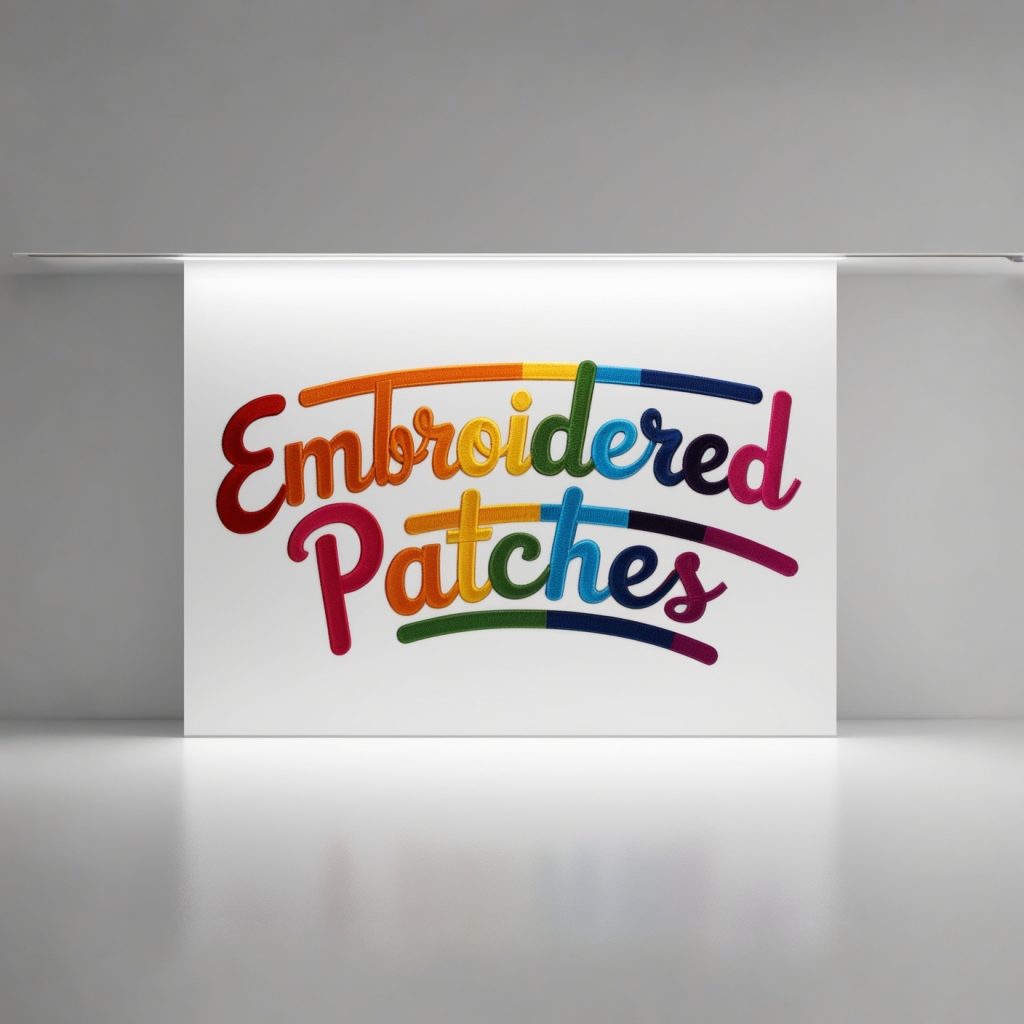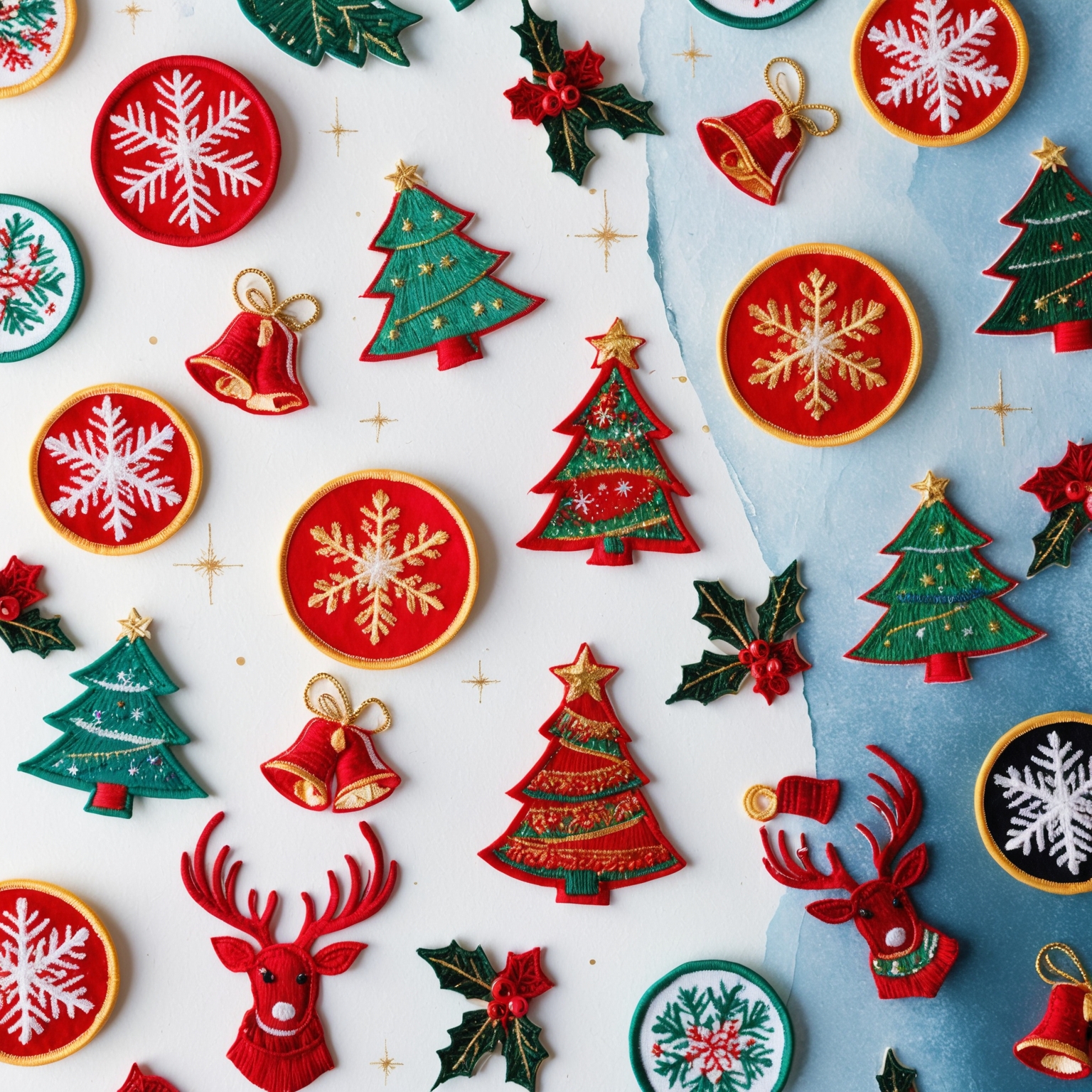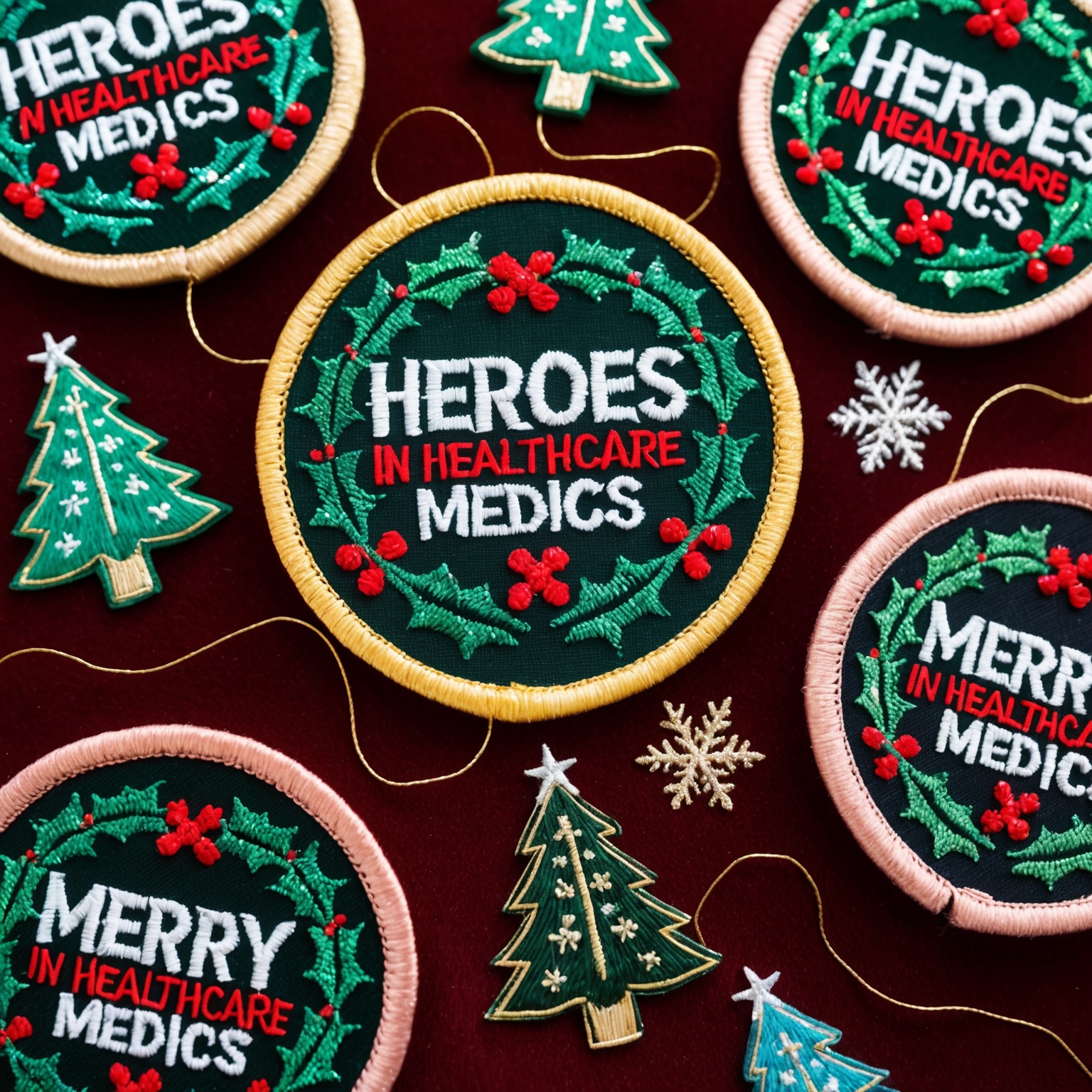The Timeless Appeal of Embroidered Patches
Embroidered patches have long been a popular way to express identity, commemorate events, and add a touch of style to clothing and accessories. Whether you’re looking to create a custom design for a sports team, a business, or a personal project, choosing the perfect embroidered patch involves several important considerations. From the quality of materials to the intricacy of the design, each element contributes to the overall look and durability of the patch. This article provides nine essential tips for selecting high-quality embroidered patches that offer both style and longevity.
1. Define Your Purpose and Design Goals
Understanding the Intended Use
The first step in choosing the perfect embroidered patch is to clearly define its intended use. Consider whether the patch will be used for uniforms, promotional items, fashion, or memorabilia. The purpose of the patch will influence its design, size, and the materials used. For instance, a patch for a sports team might require durability and bold colors, while a fashion patch might prioritize intricate design and aesthetic appeal.
Example: A company might create embroidered patches for employee uniforms to enhance brand identity, ensuring the design is professional and aligned with the company’s branding.
Setting Design Goals
Establishing clear design goals is crucial for creating a cohesive and visually appealing patch. Determine the key elements you want to include, such as logos, text, and symbols. Consider the message or theme you want the patch to convey, and choose design elements that align with these goals. A well-thought-out design will make the patch more meaningful and impactful.
Example: A scout troop might design a patch to commemorate a special camping trip, incorporating imagery of nature and the troop’s emblem.
2. Choose the Right Size and Shape
Selecting the Appropriate Size
The size of the embroidered patch is an important factor that affects its visibility and detail. Larger patches allow for more intricate designs and are easily noticeable from a distance, making them ideal for uniforms and promotional items. Smaller patches are more discreet and suitable for personalizing clothing or accessories.
Example: A large back patch might be perfect for a biker jacket, while a small logo patch could be used on a hat or backpack.
Considering the Shape
The shape of the patch can enhance its visual appeal and complement the design. Common shapes include circles, squares, rectangles, and shields, but custom shapes can also be created to match specific design elements. The shape should be chosen based on the design’s composition and how it will be used.
Example: A shield-shaped patch might be appropriate for a law enforcement agency, conveying a sense of protection and authority.
3. Select High-Quality Materials
Choosing the Right Fabric
The fabric used for the base of the embroidered patch affects its durability and appearance. Common options include twill, felt, and velvet, each offering different textures and levels of durability. Twill is a popular choice for its strength and smooth finish, while felt provides a soft and classic look.
Example: A military unit might choose a durable twill fabric for their patches to withstand harsh conditions and frequent use.
Picking the Right Threads
The quality of the embroidery threads is crucial for the patch’s overall look and longevity. High-quality threads are colorfast, resistant to fraying, and provide a smooth, even finish. Polyester and rayon threads are commonly used for their durability and vibrant colors.
Example: A custom embroidered patch for a fashion brand might use high-quality rayon threads for a glossy, luxurious finish.
4. Pay Attention to Embroidery Coverage and Stitch Count
Understanding Embroidery Coverage
Embroidery coverage refers to the amount of the patch’s surface covered by stitching. Full embroidery coverage results in a rich, textured appearance, while partial coverage allows the base fabric to show through. The choice depends on the desired look and the level of detail in the design.
Example: A full-coverage embroidered patch might be used for a detailed logo, while partial coverage could highlight a simple design with negative space.
Considering the Stitch Count
The stitch count, or the number of stitches used in the embroidery, affects the detail and quality of the patch. Higher stitch counts allow for more intricate designs and finer details, but they also increase the cost. For simpler designs, a lower stitch count may be sufficient.
Example: A high-stitch-count patch might be necessary for a detailed emblem with intricate shading and fine lines.
5. Opt for Durable Backing Options
Choosing the Right Backing
The backing of an embroidered patch provides support and determines how it will be attached to clothing or accessories. Common backing options include sew-on, iron-on, adhesive, and Velcro. The choice depends on the intended use and the ease of application.
Example: An iron-on backing might be ideal for casual apparel, allowing for easy application with a household iron, while Velcro backing is suitable for tactical gear that requires frequent patch changes.
Ensuring Long-Lasting Attachment
For patches that need to withstand regular wear and tear, such as those on uniforms or outdoor gear, choosing a durable backing is essential. Sew-on and Velcro backings offer secure attachment, while iron-on and adhesive options are more convenient for less demanding applications.
Example: A scout troop might use sew-on patches for their uniforms to ensure they remain securely attached during outdoor activities.
6. Focus on Color and Design Accuracy
Selecting Vibrant and Accurate Colors
The colors used in an embroidered patch should be vibrant and true to the design. High-quality threads provide rich, consistent colors that do not fade easily. It’s important to choose colors that accurately represent the design and match any specific branding or thematic requirements.
Example: A company might use its official brand colors for an embroidered patch to ensure consistency with other promotional materials.
Ensuring Design Precision
Design precision is crucial for creating a professional-looking patch. This includes accurate representation of logos, text, and other design elements. Working with experienced designers and manufacturers can help ensure that the final product matches the intended design.
Example: A sports team might work closely with a designer to ensure their team logo is accurately represented on the patch, including any specific details or stylized elements.
7. Consider the Edge Style
Choosing the Right Edge Finish
The edge finish of an embroidered patch affects both its appearance and durability. Common edge styles include merrowed, heat-cut, and laser-cut edges. Merrowed edges are stitched around the perimeter and provide a traditional, rounded finish. Heat-cut and laser-cut edges allow for more intricate shapes and a cleaner, modern look.
Example: A patch for a vintage-themed project might use a merrowed edge for a classic look, while a modern tech company’s patch might use laser-cut edges for a sleek finish.
Balancing Aesthetics and Functionality
The choice of edge style should balance aesthetics and functionality. Consider the overall design of the patch and how the edge style complements it. Additionally, think about the durability of the edge and how it will hold up under different conditions.
Example: A patch designed for outdoor gear might prioritize durability with a merrowed edge, ensuring it can withstand rough use and frequent washing.
8. Assess the Manufacturer’s Reputation and Experience
Researching Manufacturers
Choosing a reputable manufacturer is crucial for ensuring the quality of your embroidered patches. Look for manufacturers with a proven track record of producing high-quality products. Read reviews, ask for samples, and check their portfolio to assess their expertise and the quality of their work.
Example: A non-profit organization might research multiple manufacturers and request samples before selecting one to produce patches for a fundraising event.
Considering Customer Service and Support
Good customer service and support are important factors when working with a manufacturer. A responsive and communicative manufacturer can help address any questions or concerns, provide design assistance, and ensure timely delivery of your patches.
Example: A school might choose a manufacturer known for excellent customer service, ensuring smooth communication and support throughout the design and production process.
9. Plan for Quantity and Budget
Determining the Quantity Needed
Deciding on the quantity of patches needed is an important consideration. Manufacturers often offer discounts for larger orders, so it’s essential to calculate the number of patches required for your project. Consider ordering extras to account for potential errors, future use, or promotional giveaways.
Example: A club might order a larger quantity of patches for a limited edition release, ensuring they have enough to meet demand and keep some as mementos.
Budgeting for Quality
While it’s important to stay within budget, it’s also crucial not to compromise on quality. Investing in high-quality materials and workmanship will result in a more durable and visually appealing patch. Consider the long-term value of a well-made patch, especially if it represents a brand, organization, or significant event.
Example: A company might allocate a higher budget for patches used in corporate uniforms, ensuring they reflect the company’s professionalism and quality standards.
Creating the Perfect Embroidered Patch
Choosing the perfect embroidered patch involves careful consideration of various factors, from design and materials to manufacturing and budget. By defining your purpose and design goals, selecting the right size and shape, and focusing on quality materials and craftsmanship, you can create a patch that is both stylish and durable. Whether for personal use, promotional purposes, or as a symbol of identity and pride, a well-designed embroidered patch is a versatile and lasting addition to any collection.
As you embark on the journey of creating or selecting embroidered patches, remember that attention to detail and a commitment to quality are key. By following these nine essential tips, you’ll be well-equipped to make informed decisions and create patches that truly stand out. Whether you’re celebrating a special event, promoting a brand, or expressing personal style, the perfect embroidered patch is within reach.
If you are interested in purchasing high-quality custom patches, feel free to call us at 1-866-903-4903 or fill out one of our FREE quotes here.




